Garbage Incinerator
Taishan ® The 3rd Generation Energy-Efficient& Eco-Friendly Circulating Fluidized Bed Boiler
The 3rd Generation Energy-efficient and Eco-friendly Circulating Fluidized Bed Boiler, while maintaining the adaptability and high efficiency of our company’s original coal types, fully meets environmental parameters such as desulfurization and denitrification. Furthermore, it achieves a leading position in China in terms of reducing the fan power consumption of CFB boilers, improving combustion efficiency, and reducing heat exchange surface wear.

Unsure how to choose a Garbage Incinerator?
Contact us for complimentary boiler selection guidance, cost estimations, and expert technical advice for your project.
Featured
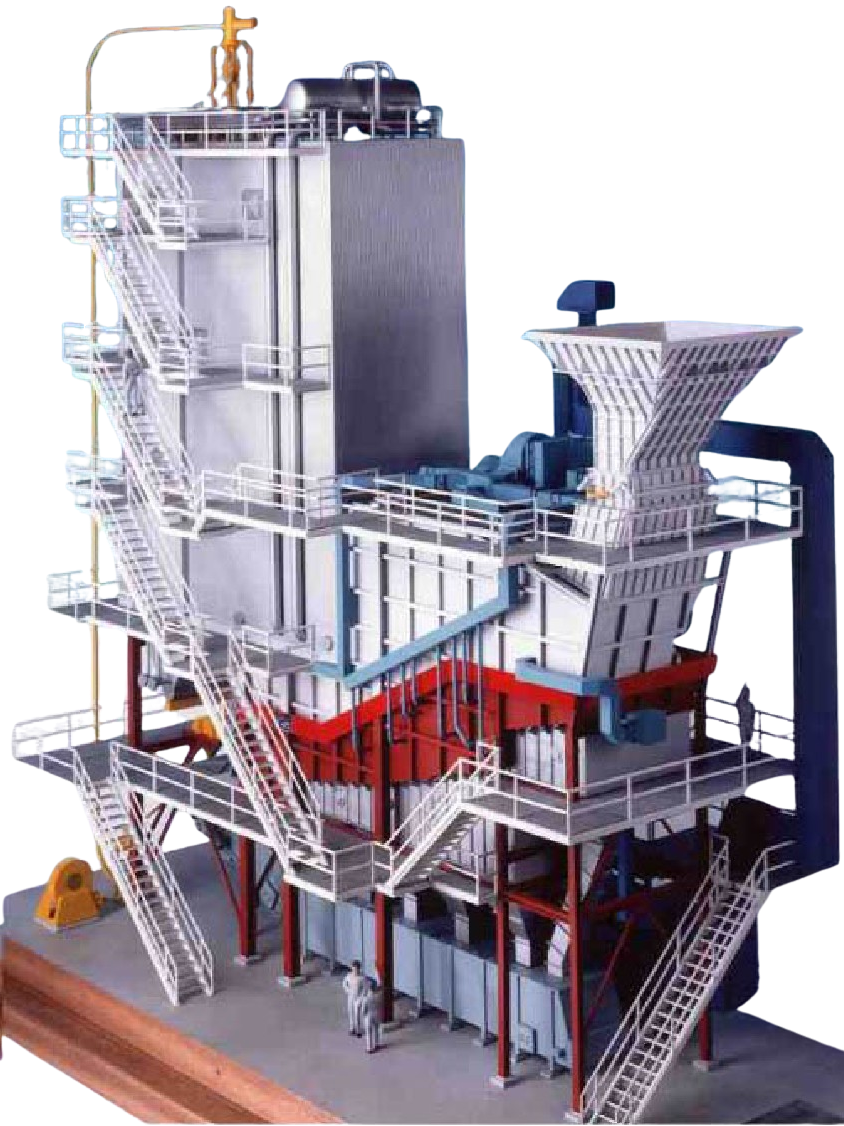
Easy, Stable & Reliable Operation.
Easy, stable and reliable operation. Wide fuel adaptability ensures that most of the solid waste can be directly burned in the furnace without any pretreatment.
Suitable for the characteristics of urban waste.
Furnace arch and combustion chamber design as well as air layout and distribution are suitable for the low calorific value and high moisture of urban garbage.
Enhanced Sealing for Reliability
The furnace adopts a full-membrane wall structure, so the sealing effect is more reliable.
Clog-free
The convective heating surface adopts appropriate flue gas speed and anti-friction cover, and the center distance of the pipe is properly arranged to avoid the tube bundle being blocked by fly ash.
Natural Circulation Design
It adopts single drum natural circulation vertical or horizontal arrangement, with superheater, spray type desuperheater, primary and secondary air preheater and economizer.
Grate Cooling for Durability
The cold air is fed from the bottom of the furnace and blown out from the gap of the grate, which has a good cooling effect on the grate.
Optimal Burning
The falling of the garbage makes it fully flipped and stirred, which ensures that all garbages are exposed to the combustion air and fully burned.
Segmented Control
The segmented adjustment of the grate makes the control of the combustion condition is more convenient.

Process Flow Diagram

Why Choose Taishan Group ?
Leading coal, biomass and waste to energy solution provider.
- Covering Entire Project Lifecycle A-Z Service.
- Ranked top in China's industrial boiler industry for 10 consecutive years.
- Access cutting-edge, eco-friendly energy solutions.
- Benefit from over 70 years of technical expertise.
- Align with global sustainability initiatives.
- China largest-capacity biomass power generation boiler.
- Experience reliable, efficient equipment for green development.
378000+
Workshop m²
5000+
Trained Staff
1978
History Since
Project Case
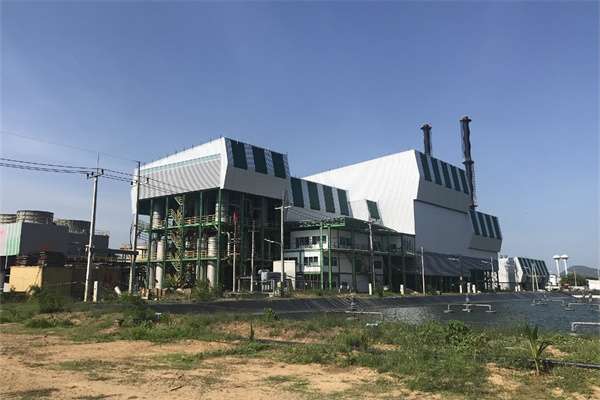
- THAI BEVERAGE
- Thailand
Thai Breweries Group, the largest beer & beverage manufacturer in Thailand. We are responsible for the complete EPC (Engineering, Procurement & Construction) of the boiler island for their self-built beer factory with a 2x30-ton spent grain boiler & a 9MW backpressure steam turbine power generation system.
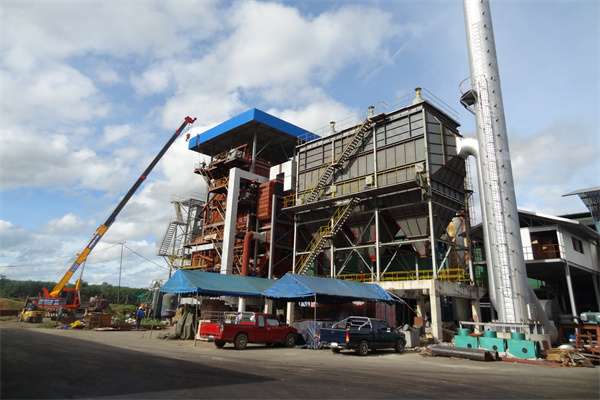
- THACHANA PALM OIL CO., LTD
- Thailand
THACHANA PALM OIL CO., LTD, a renowned palm oil production company in Thailand, has placed an order with our company for a 38-ton biomass-fired palm fiber boiler for production purposes.

- Taishan Beikong
- Thailand
Taishan Beikong Environmental Energy Development Co., Ltd. is an enterprise mainly engaged in the production and supply of electricity and heat. Taishan Group has manufactured two 600t/d domestic waste incineration boilers for it to generate electricity. This is our second cooperation. We were also responsible for the production of the previous project.

- Vietnam National Coal
- Vietnam
2 sets 170t/h Circulating Fluidized Bed Boiler for Vietnam National Coal and Mineral Industries Group Bauxite-Alumina Project
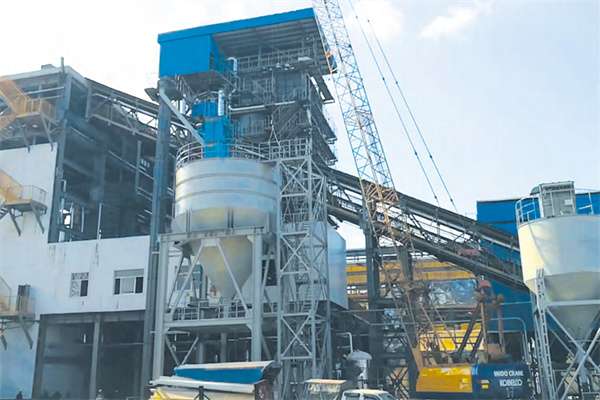
- Aksu Sunshine Thermal Company
- China
2 sets 116MW Coal CFB hot water boilers for Aksu Sunshine Thermal Company heating projects

- Jinyu Tyre
- Vietnam
2*20 tons fluidized bed boiler in Jinyu Tyre Vietnam EPC project
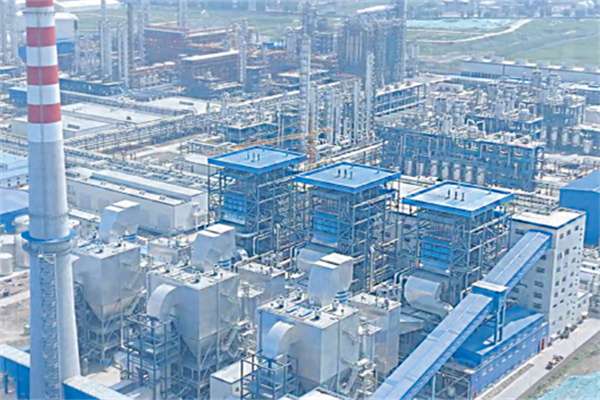
- PT QMB NEW ENERGY MATERIAL
- Indonesia
75t/h Coal CFB Boiler for Indonesia PT QMB NEW ENERGY MATERIALSPt Laterite Nickel Ore Smelting Project

- Sailun Tyre
- Vietnam
Sailun Tyre Vietnam 35 tons and 75 tons fluidized bed boiler EPC project
FAQ
Frequently Asked Questions about Garbage Incinerator.
A garbage incinerator is a facility designed to burn solid waste as a method of waste management. By combusting waste, incinerators reduce its volume and mass, potentially generate energy, and minimize the amount of material sent to landfills.
Garbage incinerators have several advantages that make them a potential solution in waste management strategies. Here’s a breakdown of the key benefits:
Waste Volume Reduction: Incineration significantly reduces the volume of waste compared to landfills. This can be crucial for areas with limited landfill space. Burning waste at high temperatures can result in a 90% or more reduction in volume.
Energy Production (in some facilities): When equipped with heat recovery systems, incinerators can capture the heat generated during combustion to produce steam or hot water. This steam can then be used to generate electricity or used for industrial processes, offsetting reliance on fossil fuels for energy production.
Destruction of Pathogens: The high temperatures within the incinerator chamber effectively destroy harmful bacteria and pathogens present in the waste. This can help reduce the risk of disease transmission associated with landfills.
Reduced Reliance on Landfills: By diverting waste from landfills, incinerators can help to extend the lifespan of existing landfills and potentially reduce the need for creating new ones.
Here are some additional advantages to consider:
Potential for Waste-to-Energy independence: In some scenarios, the electricity generated from incinerators can contribute to a region’s energy independence, reducing reliance on imported fuels.
Treatment of Certain Wastes: Incineration can be a suitable option for specific types of waste that are difficult to recycle or compost, such as medical waste or hazardous materials (with proper controls).
It’s important to remember that these advantages come with some drawbacks that also need to be considered (see next answer for details on disadvantages).
While garbage incinerators offer some advantages in waste management, there are also significant drawbacks to consider:
Air Pollution: Despite emission control systems, incinerators still release pollutants like nitrogen oxides, sulfur oxides, and fine particulate matter into the atmosphere. These pollutants can contribute to respiratory problems, heart disease, and other health issues, especially for people living near incinerator facilities.
Ash Disposal: The burning process leaves behind ash residue, which can contain concentrated heavy metals and other contaminants. This ash requires careful handling and disposal in specially lined landfills, adding to overall waste management costs.
High Costs: Building and operating incinerator facilities is expensive. The initial investment for the incinerator itself, pollution control equipment, and ongoing maintenance can be significant.
Not a Recycling Solution: Incineration destroys materials that could potentially be recycled, such as paper, plastic, and metals. This goes against the principles of waste reduction and resource recovery preferred in a waste management hierarchy.
Limited Long-Term Benefits: While incinerators can reduce landfill dependence, they don’t eliminate waste. They also contribute to greenhouse gas emissions, albeit potentially less than landfills due to energy recovery capabilities in some facilities.
Here are some additional disadvantages to consider:
Public Opposition: Concerns about air quality and potential health risks can lead to public opposition to incinerator construction in communities.
Risk of Malfunction: Incinerator malfunctions can lead to even higher pollutant emissions, highlighting the importance of stringent regulations and proper operation.
Focus on Waste Disposal, Not Reduction: Incineration can encourage a “throw-away” mentality and distract from efforts to reduce waste generation at the source and prioritize recycling and composting.
Overall, the decision to utilize garbage incinerators requires careful consideration of both the potential benefits and drawbacks. Many countries are moving away from incineration and focusing on waste reduction, recycling, and composting strategies to create a more sustainable waste management approach.
A garbage incinerator tackles waste disposal in a series of key steps:
Waste Acceptance and Sorting (Optional): Garbage trucks deliver waste to the incinerator facility. In some cases, there might be preliminary sorting to remove recyclables or hazardous materials before incineration. This can help divert materials for recycling or require specialized treatment for hazardous waste.
Combustion Chamber: The sorted waste is then transferred into a large, enclosed combustion chamber. Here, the waste is burned at extremely high temperatures, typically exceeding 1,500°C (2,700°F). This intense heat breaks down the waste materials and significantly reduces their volume.
Air Pollution Control Systems: The exhaust gases from the combustion chamber contain pollutants like fly ash (fine particles), acid gases (sulfur dioxide, nitrogen oxides), and heavy metals. These can be harmful to human health and the environment if released untreated. The exhaust passes through a series of air pollution control systems designed to remove these contaminants before they are released into the atmosphere. Here are some common methods used:
- Scrubbers: These use a spray of water or a chemical solution to capture and remove pollutants from the exhaust gas.
- Baghouses: These are large fabric filters that trap fine particles like fly ash from the exhaust stream.
- Selective Non-catalytic Reduction (SNCR): This technology injects ammonia or urea into the exhaust gas stream to convert nitrogen oxides into less harmful substances like nitrogen and water vapor.
Ash Handling: The burning process significantly reduces the original waste volume, leaving behind ash residue. This ash may contain concentrated heavy metals or other contaminants and requires careful handling. It often undergoes further treatment to stabilize it before being disposed of in a designated landfill.
Energy Recovery (optional): In some incinerators, the heat generated during combustion isn’t simply released into the atmosphere. Heat exchangers capture this thermal energy to create steam or hot water. This steam can then be used for various purposes, including:
- Electricity Generation: The steam can be used to drive turbines that generate electricity.
- District Heating: The hot water can be piped to nearby buildings for space heating and hot water needs.
Here’s an analogy to visualize the process: Imagine a large, high-temperature oven (combustion chamber) that breaks down trash. The leftover smoke from the oven (flue gas) needs to be cleaned by filters and scrubbers (air pollution control) before it can be released outside. Some incinerators also capture the heat from the oven (energy recovery) to generate steam or hot water for other uses.
The environmental friendliness of garbage incinerators is a complex issue with strong arguments on both sides. Here’s a breakdown to help you form your own opinion:
Potential Benefits:
Waste Volume Reduction: Incineration significantly reduces waste volume compared to landfills, potentially extending their lifespan and reducing the need for new ones.
Energy Production (in some facilities): With proper technology, incinerators can capture heat from combustion to generate electricity or heat buildings, offsetting reliance on fossil fuels.
Destruction of Pathogens: High incineration temperatures effectively destroy harmful bacteria and pathogens present in the waste, potentially reducing health risks associated with landfills.
Environmental Drawbacks:
Air Pollution: Despite controls, incinerators emit pollutants like nitrogen oxides, sulfur oxides, and particulate matter, impacting air quality and potentially causing respiratory problems.
Ash Disposal: The burning process leaves behind ash containing concentrated heavy metals. This ash requires careful handling and disposal in landfills, adding to environmental burdens.
Greenhouse Gas Emissions: While potentially lower than landfills, incinerators still contribute to greenhouse gas emissions through incomplete combustion and energy use.
Additional Considerations:
Focus on Waste Disposal, Not Reduction: Incineration can encourage a “throw-away” mentality and distract from efforts to reduce waste generation at the source and prioritize recycling and composting.
Public Perception: Concerns about air quality and potential health risks can lead to public opposition to incinerator construction in communities.
The Future of Waste Management:
Many countries are moving away from incineration and focusing on a waste management hierarchy that prioritizes:
- Waste Reduction: Minimize waste generation through product design, reuse, and responsible consumption.
- Recycling and Composting: Recover valuable materials and organic matter for reuse in new products or soil amendment.
- Waste-to-Energy (with advanced technologies): Explore cleaner and more efficient technologies for energy recovery from waste, minimizing environmental impact.
Overall:
Garbage incinerators offer some advantages in waste management, but they come with environmental drawbacks. As we strive for sustainability, the focus is shifting towards waste reduction, recycling, and exploring cleaner waste-to-energy technologies.
Selecting the right garbage incinerator requires careful consideration of several factors specific to your needs and situation. Here’s a roadmap to guide you through the decision process:
Needs Assessment:
Waste Type and Volume: Identify the type of waste you plan to incinerate (municipal solid waste, medical waste, etc.) and the typical daily or annual volume you expect to handle.
Energy Recovery Needs: Do you require the incinerator to generate electricity or heat for your facility? If so, determine the desired energy output.
Environmental Regulations: Research and understand the local and national regulations regarding air emissions, ash disposal, and overall environmental impact.
Budgetary Constraints: Factor in the upfront cost of the incinerator itself, pollution control equipment, and ongoing maintenance expenses.
Choosing the Right Incinerator:
Type of Incinerator: Based on your waste type and needs, consider options like:
- Mass-burn incinerators: Suitable for various unsorted municipal solid waste.
- Waste-to-Energy (WtE) facilities: Prioritize capturing heat for electricity or district heating.
- Fluidized bed incinerators: May offer lower emissions for certain waste types.
- Plasma gasification (emerging technology): Breaks down waste into cleaner-burning syngas.
Capacity and Efficiency: Select an incinerator with sufficient capacity to handle your waste volume while ensuring optimal efficiency for cost-effectiveness.
Air Pollution Control Systems: Choose an incinerator with robust air pollution control systems that meet or exceed regulatory requirements.
Reputation and Experience: Research the reputation and experience of potential incinerator manufacturers and consider factors like after-sales service and maintenance support.
Additional Considerations:
Public Perception: Be mindful of potential public concerns about air quality and engage in transparent communication with the community.
Long-Term Sustainability: Evaluate the incinerator’s alignment with your long-term sustainability goals. Consider if it prioritizes waste reduction or primarily focuses on waste disposal.
Alternative Solutions:
Before committing to incineration, explore alternative waste management strategies like:
Waste Reduction Programs: Implement initiatives to reduce waste generation at the source.
Recycling and Composting: Prioritize recycling and composting programs to divert materials from incineration.
Advanced Waste-to-Energy Technologies: Consider emerging technologies like anaerobic digestion for organic waste conversion into biogas, or chemical recycling to break down plastics for reuse.
Remember, choosing a garbage incinerator is a significant decision. By carefully assessing your needs, researching options, and considering alternatives, you can determine if incineration is the most suitable solution for your specific waste management challenge.
The cost of a garbage incinerator can vary widely based on several factors including its capacity, technology, location, regulatory requirements, and additional features like energy recovery systems. Here’s an overview of the main cost components and factors influencing the price of garbage incinerators:
Initial Capital Costs
1. Size and Capacity: The capacity of the incinerator significantly impacts the price. Smaller units might cost a few million dollars, while large-scale municipal incinerators can cost upwards of $100 million or more, depending on the scale and capabilities.
2. Technology: Advanced technologies, especially those designed to handle different types of waste and include sophisticated emission control systems, are more expensive. Technologies such as rotary kilns or fluidized bed incinerators generally cost more than simple fixed grate designs.
3. Energy Recovery Systems: Incinerators equipped with systems to convert waste heat into electricity or heat (waste-to-energy) have higher upfront costs but can provide financial returns through energy production.
4. Emission Control Systems: Meeting stringent environmental standards requires installation of advanced air pollution control systems which add to the initial investment. Systems such as scrubbers, filters, and catalysts are essential for compliance but are costly.
Operating and Maintenance Costs
1. Fuel (if required): Some incinerators require additional fuel to maintain optimal combustion temperatures, adding to the operating costs.
2. Labor: Continuous operation involves staffing costs for monitoring, maintenance, and management.
3. Maintenance: Regular maintenance is crucial to ensure operational efficiency and compliance with environmental regulations, which involves periodic replacement of parts like filters and servicing of mechanical components.
4. Disposal of Residues: The costs associated with handling and safely disposing of ash and other residues can be significant, especially if the ash is classified as hazardous waste.
Other Costs
1. Permitting and Compliance: Costs associated with obtaining permits, conducting environmental impact assessments, and ensuring regulatory compliance can be considerable.
2. Infrastructure: Additional infrastructure needed for waste delivery, storage, and handling, as well as for residue disposal, must be factored into the total cost.
3. Financing: Interest on capital borrowed to build the incinerator can add substantially to the overall costs.
Estimation Examples
– Small-scale incinerators for specific applications (like medical waste) might start around $50,000 to $500,000.
– Medium-scale incinerators capable of processing several tons of municipal solid waste per day might range from $1 million to $15 million.
– Large municipal waste-to-energy plants can easily exceed $100 million, depending on their size and the complexity of technologies used.
The economic feasibility of a garbage incinerator also depends on potential revenue streams from energy production and the savings from reduced landfill use, which can offset some of the high initial and operational costs over time. When considering an investment in a garbage incinerator, it’s crucial to conduct a thorough cost-benefit analysis, including long-term operational costs and potential environmental and social impacts.
Yes, there are several alternatives to garbage incineration, each with its own set of advantages and challenges. These alternatives focus on waste management principles like reducing, reusing, recycling, and recovering waste in different forms. Here’s a brief overview of some key alternatives:
1. Recycling and Composting
– Recycling involves separating, collecting, and processing materials from waste to make new products. It can significantly reduce the need for extracting raw materials, save energy, and decrease pollution.
– Composting is the biological decomposition of organic waste, such as food scraps and yard waste, into nutrient-rich compost. It reduces the volume of waste sent to landfills and provides a natural fertilizer for agriculture and gardening.
2. Anaerobic Digestion
– This process breaks down organic material in the absence of oxygen, producing biogas (a mixture of methane and carbon dioxide) and digestate, a nutrient-rich substance. The biogas can be used as a renewable energy source, while the digestate can be used as a fertilizer.
3. Mechanical Biological Treatment (MBT)
– MBT combines mechanical separation of waste (to recover recyclable materials) with biological treatment (such as composting or anaerobic digestion) of the organic fraction. The process reduces the volume of waste and recovers materials and energy.
4. Landfill Gas Capture
– While landfills are often considered the last option for waste disposal, modern landfills can be designed to capture methane gas produced from the decomposition of organic waste. This gas can then be used to generate electricity or heat, reducing greenhouse gas emissions.
5. Pyrolysis and Gasification
– These are thermal processes that decompose organic material at high temperatures in the absence (pyrolysis) or limited presence (gasification) of oxygen. They produce syngas (a mixture of hydrogen, carbon monoxide, and other gases), which can be used to generate energy or as a feedstock for producing chemicals. These processes typically produce fewer pollutants than direct incineration.
6. Material Recovery Facilities (MRFs)
– MRFs focus on separating and preparing recyclable materials for end-user manufacturers. While not a disposal method, MRFs are integral to reducing the volume of waste needing disposal through incineration or landfilling.
7. Plasma Arc Recycling
– An advanced waste treatment technology that uses plasma torches to heat waste to extremely high temperatures, breaking down organic material into syngas and leaving behind a solid waste called slag, which can be used in construction. This process is expensive but can handle a wide range of wastes, including hazardous materials.
8. Reduce, Reuse, Rethink
– Beyond technological solutions, reducing waste generation through lifestyle changes, reusing materials, and rethinking consumption patterns are fundamental to sustainable waste management. Policies and programs that encourage these behaviors can significantly decrease the amount of waste requiring disposal.
Each of these alternatives has its own environmental, economic, and social implications. The choice of waste management strategy depends on various factors, including the type and amount of waste generated, local regulations, available infrastructure, and societal values. Often, a combination of these methods, tailored to local conditions, is the most effective approach to managing waste sustainably.
There are several main types of garbage incinerators, each with their own advantages and disadvantages. Here’s a breakdown of some common ones:
Traditional Incineration:
- Mass-burn incinerators: These are the most common type, designed to burn unsorted municipal solid waste (MSW) at high temperatures. They offer a simple design but may have higher emission levels compared to some advanced technologies.
Advanced Incineration Technologies:
Fluidized bed incinerators: These utilize a bed of sand or inert material fluidized by air to suspend and burn the waste more efficiently at lower temperatures, potentially reducing some harmful emissions.
Rotary kiln incinerators: These employ a large, rotating cylindrical furnace to process waste. They can handle a wider variety of waste types and offer good efficiency, but can be more complex and expensive to build.
Emerging Technologies:
- Plasma gasification: This technology uses high-temperature plasma torches to break down waste into a syngas (synthetic gas) which can be used for fuel or further processed into cleaner burning fuels. It’s a developing technology with potential environmental benefits, but requires further research and development.
Here’s a table summarizing the key characteristics of these incinerator types:
| Incinerator Type | Description | Advantages | Disadvantages |
|---|---|---|---|
| Mass-burn | Simplest design, burns unsorted MSW | Low upfront cost | Potentially higher emissions |
| Fluidized Bed | Uses fluidized bed for efficient burning | Lower emissions compared to mass-burn | More complex design than mass-burn |
| Rotary Kiln | Large rotating furnace, handles diverse waste | Good efficiency, processes various waste types | Higher cost and complexity compared to mass-burn |
| Plasma Gasification | Uses plasma torches to break down waste into syngas | Potentially cleaner burning syngas | Emerging technology, high energy requirements |
Additional Considerations:
Waste-to-Energy (WtE) Facilities: These incinerators prioritize capturing the heat generated during combustion to produce electricity or district heating. They can be any of the above types but emphasize energy recovery.
Size and Capacity: Incinerators come in various sizes, with capacities to handle different volumes of waste.
When choosing an incinerator type, factors like waste composition, desired emission levels, energy recovery needs, and budget will influence the selection process.
Comparing garbage incinerators and landfills for environmental impact is complex, with both options having advantages and disadvantages. Here’s a breakdown to help you understand the trade-offs:
Waste Volume Reduction:
- Incinerators: Significantly reduce waste volume through burning, potentially extending landfill lifespan.
- Landfills: Waste accumulates and takes up space, requiring new landfills as existing ones reach capacity.
Air Pollution:
- Incinerators: Emit pollutants like nitrogen oxides, sulfur oxides, and particulate matter, even with controls. These can contribute to respiratory problems and other health issues.
- Landfills: Generate methane, a potent greenhouse gas, from decomposing organic waste. Landfills may also have issues with odor and air pollution from volatile organic compounds (VOCs).
Land and Water Contamination:
- Incinerators: Ash residue from incineration can contain heavy metals and require careful disposal in landfills, potentially impacting land and water quality if not properly managed.
- Landfills: Leachate, a liquid formed from decomposing waste, can seep into the ground and contaminate water sources if landfills are not properly lined and monitored.
Resource Recovery:
- Incinerators: Some incinerators (WtE facilities) can capture heat to generate electricity or heat buildings, offsetting reliance on fossil fuels.
- Landfills: Landfills offer limited opportunities for resource recovery, though some advancements are being made in capturing landfill gas for energy production.
Overall Impact:
- Incinerators: Reduce landfill dependence but introduce air pollution concerns and require careful ash management.
- Landfills: Offer lower upfront costs but contribute to greenhouse gas emissions and have potential for land and water contamination.
Here are some additional factors to consider:
Regulations: Both incinerators and landfills are subject to environmental regulations that aim to minimize their impact. However, the effectiveness of regulations can vary depending on location.
Long-Term Sustainability: Neither option is ideal for a sustainable waste management strategy. The focus is shifting towards waste reduction, recycling, and composting to minimize reliance on both landfills and incinerators.
Ultimately, the choice between incinerators and landfills depends on specific circumstances and priorities. Some communities may find a combination of waste reduction initiatives, recycling, and a smaller, well-controlled incinerator for residual waste to be the most suitable approach.
Garbage Incinerator
Ultimate Guide
2024

This guidebook serves as an extensive resource for professionals, engineers, and researchers interested in Garbage Incinerator. It covers the fundamental principles, technology advancements, design considerations, operational challenges, and environmental impacts of Garbage Incinerator. Through detailed explanations, case studies, and practical insights, readers will gain a deep understanding of Garbage Incinerator technology and its applications in modern power and heat generation.














